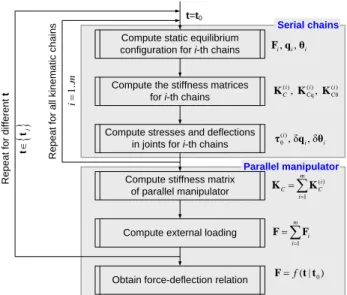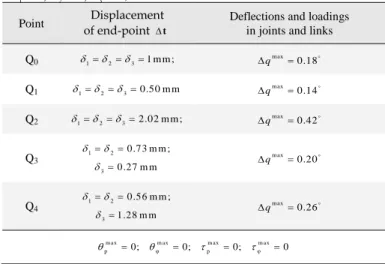Stiffness modeling of non-perfect parallel manipulators
Texte intégral
Figure




Documents relatifs
Figure 3 shows the variation of the effective contact stiffness K c obtained with the finite element model (gray solid line), the Kachanov’s model (black solid line), the
These data indicate that, while elite jumpers presented higher stiffness of both musculotendi- nous and passive musculoarticular structures, a high compliance of
This paper is based on our previous work on the stiffness analysis of over- constrained parallel architectures (Pashkevich et al., 2009a, 2009b) and presents new results by
Des abris étaient creusés profondément à partir de cette première ligne; leur ouverture était le plus souvent dirigée vers l'arrière; ils avaient pour but de protéger les hommes
Different signal decom- position techniques such as wavelet packet transform (WPT) and empirical mode decomposition (EMD) have been examined for the features extraction phase.. The
The use of a lognormal function to describe the impulse response of a neuromuscular sys- tem constitutes the corner stone of the Kinematic Theory of rapid human movements (Plamondon
To compare the material properties (Young modulus) between the seam cell H1 and the head HYP7 cell matrix (without fibers), we made use of the opening in the DV direction
To sum up this section, in As-GeMn samples, three magnetic phases are observed by SQUID measurement such as paramagnetic Mn atoms diluted in Ge matrix, a low-T C (50 K) magnetic